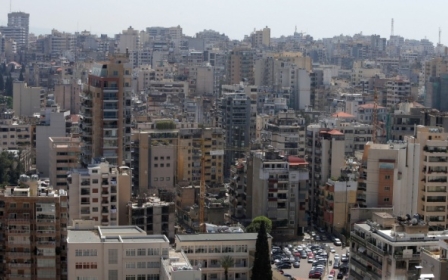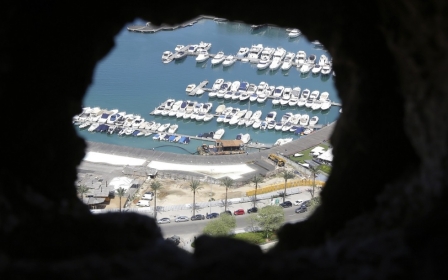America’s billion-dollar mission in Lebanon

As I’ve written about on more than a handful of occasions, a pet paranoia cultivated by the US in recent years has been Iran’s perceived encroachment into America’s “backyard”.
Back in 2008, Michael Rubin of the neoconservative American Enterprise Institute warned that the Iranian embassy in Managua, Nicaragua, was “now the largest diplomatic mission in the city”. This and other Iranian efforts in the region supposedly indicated that former president Mahmoud Ahmadinejad “might see Latin America as a beachhead from which to conduct an aggressive strategy against the United States and its allies”.
As journalist Charles Davis has noted, then-US Secretary of State Hillary Clinton also jumped on the bandwagon, announcing: “The Iranians are building a huge embassy in Managua… And you can only imagine what that’s for.”
As it turned out, “imagine” was the operative word.
In July 2009, the Washington Post reported from Managua that, “here in Nicaragua, no one can find any super-embassy”. According to the paper, Nicaraguan government officials “say the US embassy complex is the only ‘mega-embassy’ in Managua”.
The recent revelation of US plans for a ginormous new embassy in Lebanon - right next door to the current ginormous US embassy in the village of Awkar north of Beirut- further underscores America’s hypocrisy in decrying alleged Iranian violations of its own backyard while setting up camp in Iran’s.
During remarks at a 27 May news conference at the Lebanese Ministry of Foreign Affairs, US ambassador to Lebanon David Hale gushed over the “sustainable and eco-friendly facility” that will soon be erected, complete with “water-saving native plantings” and installations of “American and Lebanese art”.
In the words of Hale, the “project represents a nearly $1bn dollar investment by the American government in our partnership between America and Lebanon” and “will give us more space to advance our common interests and reflect the growing and deepening ties between our two countries”.
It would seem, of course, that better uses could be found for such gargantuan funds - both at home and abroad. Poor folks in the US and Lebanon alike could presumably rattle off a whole list of things that might mitigate the pain of daily existence more than the reinforcement of an (eco-friendly!) imperial presence outside Beirut.
And seeing as it is this very imperial entity that is responsible for inundating Israel with advanced weaponry that is regularly used against Lebanon, it’s not difficult to grasp why many Lebanese would fail to discern the existence of “common interests” with the US. Even less difficult when you consider the US role in the creation of the Islamic State, now dedicated to terrorising the region.
Furthermore, the fact that Lebanon doesn’t qualify as a state but rather as a schizophrenic mélange of sectarian warlords jostling for their piece of the pie means it’s not even possible to tell what the country’s “interests” are in the first place. Granted, the political elite do have a common interest in perpetuating their stranglehold on power - which is maybe why the US elite have detected common cause.
Lebanon’s Daily Star newspaper describes the design photos of the new-and-improved embassy as showing “a vast and imposing structure with far-reaching rectangular blocs [sic],” one clue that international art decorations might not render the new facility any less fortress-like in appearance than the current one.
This is the second relocation of the US Embassy in Lebanon since an April 1983 suicide attack at the original complex in Beirut proper. As the website of the Central Intelligence Agency notes: “The massive blast killed 63 people, including 17 Americans, some of whom were CIA officers.”
One can speculate as to what a humongous new embassy on Lebanese soil means on an intelligence-gathering level.
On a micro level, it will probably continue to entail mundane disruptions of everyday life for area residents. When I last visited the fortress on a hill in 2012 to renew my passport, I was able to witness the frustration of motorists forcibly brought to a prolonged halt anytime the ambassador - or any other American of import, presumably - was descending upon or exiting the complex.
(There was a breakthrough on the common interest front, however; as I was walking back down the hill in the general direction of Beirut, three soldiers from the Lebanese army offered me not only a ride but also vodka and beer.)
Other recent feats of arrogance emanating from the embassy in question include a 2013 visit by former US Ambassador to Lebanon Maura Connelly to ancient ruins in the southern Lebanese city of Tyre. As Emily O’Dell documented at Jadaliyya, one of the vehicles in Connelly’s convoy managed to veer off a Byzantine road and “demolish… a large section of a supporting stone wall”.
In a press release published the following day, the embassy explained that Connelly had “visited Tyre yesterday to promote the protection of cultural property and visit project sites under the Ambassador’s Fund for Cultural Preservation”.
And while stopping traffic and ruining ruins at least appear to be more innocuous activities than over-arming Lebanon’s vicious neighbour to the south, they all contribute to the maintenance of an imperial architecture that helps ensure the country’s continued service as proxy battlefield extraordinaire.
In his May remarks, Ambassador Hale promised that the new embassy would “leave no doubt” about America’s commitments to the Lebanese: “America is here to stay, to work with the Lebanese people for a secure, stable, prosperous, sovereign, and free Lebanon.”
Unfortunately for Lebanon, the first half of the sentence precludes the second.
- Belen Fernandez is the author of The Imperial Messenger: Thomas Friedman at Work, published by Verso. She is a contributing editor at Jacobin magazine.
The views expressed in this article belong to the author and do not necessarily reflect the editorial policy of Middle East Eye.
Photo: File picture shows the Lebanese city of Beirut (AFP)
New MEE newsletter: Jerusalem Dispatch
Sign up to get the latest insights and analysis on Israel-Palestine, alongside Turkey Unpacked and other MEE newsletters
Middle East Eye delivers independent and unrivalled coverage and analysis of the Middle East, North Africa and beyond. To learn more about republishing this content and the associated fees, please fill out this form. More about MEE can be found here.





